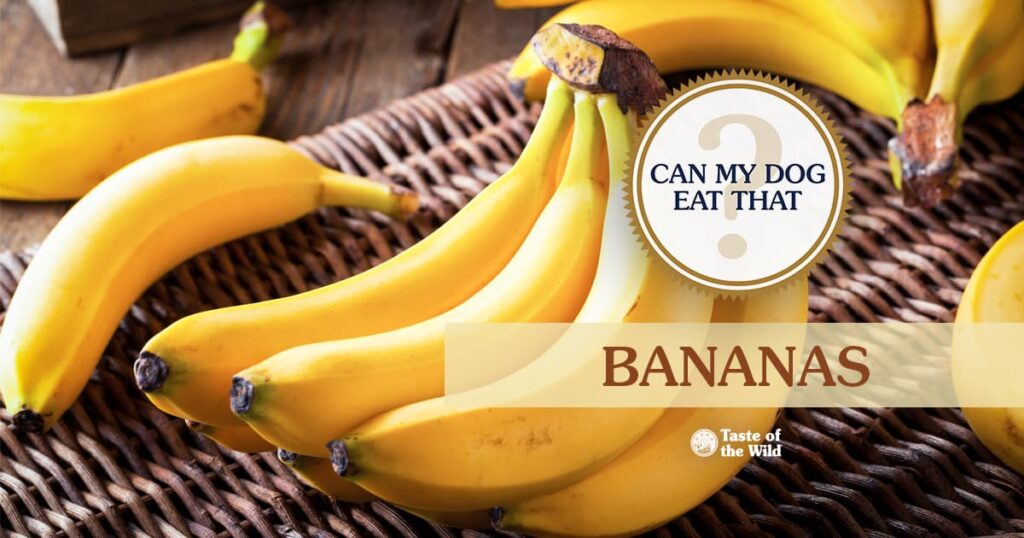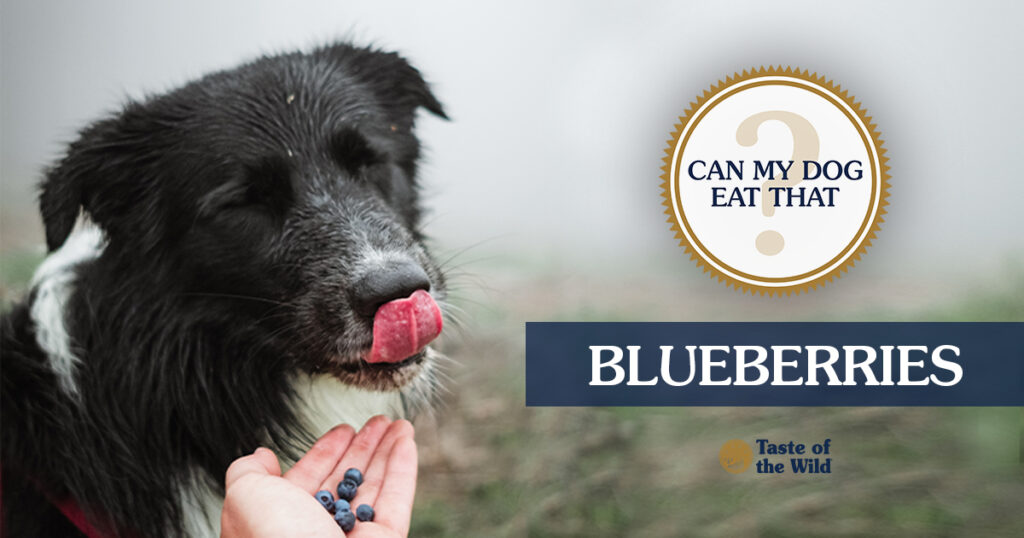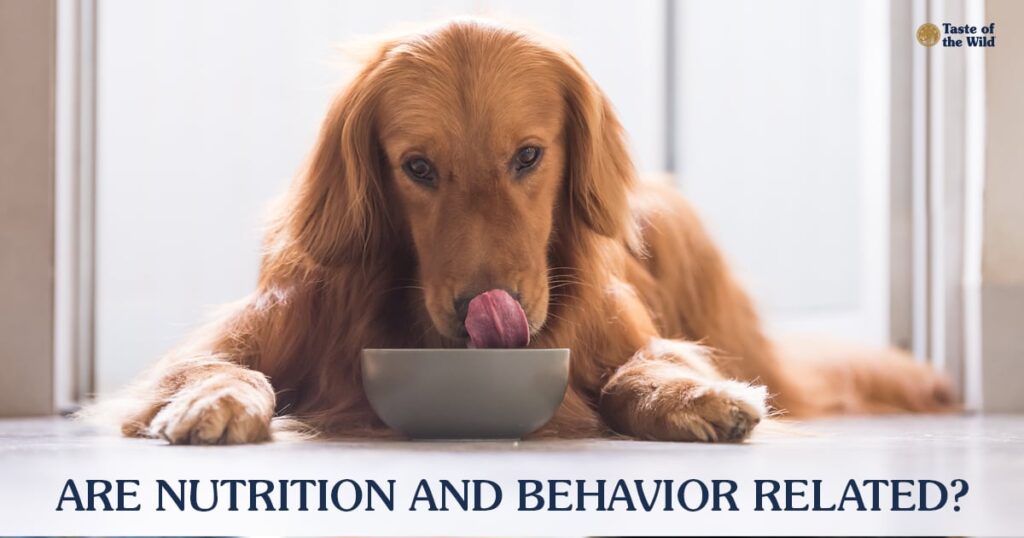
Welcome to “Can My Dog Eat That?,” our new series that answers some obvious (and not-so-obvious) questions about what your dog can and can’t safely eat. Read on!
Yep, most dogs can eat a peeled banana, in moderation. Bananas are healthy snacks packed with nutrients, but there are a couple of things you should know before feeding this a‑peeling fruit to your dog.
A Healthy Treat
Bananas are a great healthy treat option for most dogs. They are high in potassium, magnesium, vitamin B6, vitamin C and also fiber — which is typically a good thing, but not in large amounts (see below).
Bananas are a low-calorie food, so they can be a good alternative for pudgy pooches who probably shouldn’t be eating any treats (but sometimes you just can’t say “No” to those eyes). Bananas may also be good for dogs with canine kidney disease who need low-protein, low-sodium and low‑phosphorus treat options. As with all new foods, it’s best to check with your veterinarian if bananas are OK to feed to your dog, especially if they have an underlying medical condition.
Remember, Too Much of a Good Thing…
While bananas are great as a healthy treat, too much banana can lead to some messy consequences. It’s best to stick to giving your dog just a few slices of banana at a time, because too much banana can cause gastrointestinal upset — in other words, vomiting and diarrhea. Bananas are also high in sugar, which is why they should only be used as a treat, not as a regular part of your dog’s diet.
Slip That Peel into the Compost Bin
Banana flesh is a definite go (in moderation), but the banana peel is a definite no. Banana peels aren’t toxic to dogs, but they are really hard to digest, which could cause a blockage in your dog’s gastrointestinal tract or an upset stomach.
Banana-Containing Things — Yay or Nay?
So what about the things that have banana in or around them? Like most things, it depends. Peanut butter-dipped banana is going to make your dog very happy. Just make sure it’s a dog-safe peanut butter that doesn’t contain xylitol. Another fun banana use is stuffing a toy with banana — it’s bound to keep your dog entertained for a while, and it’s great for mental stimulation. You can also freeze banana slices to mix it up a little and give your dog a different texture to munch on, or mash them for yet another entirely different texture.
On the other paw, banana bread and banana cake are probably in the nay category. Most banana bread and cake recipes call for a bunch of added sugar, which is not good for any dog, and especially a diabetic or obese dog. The banana bread or cake may also contain raisins or chocolate chips which are a definite “No!” for all dogs due to their toxicity. Dehydrated banana chips depend on how they were processed — if a lot of sugar was added, these should probably be a no, too.
Bananas are a healthy treat for most dogs. So if your veterinarian says it’s OK, see if your dog goes bananas over some banana in their bowl!

RELATED POST: Can My Dog Eat That: A Guide by Taste of the Wild




